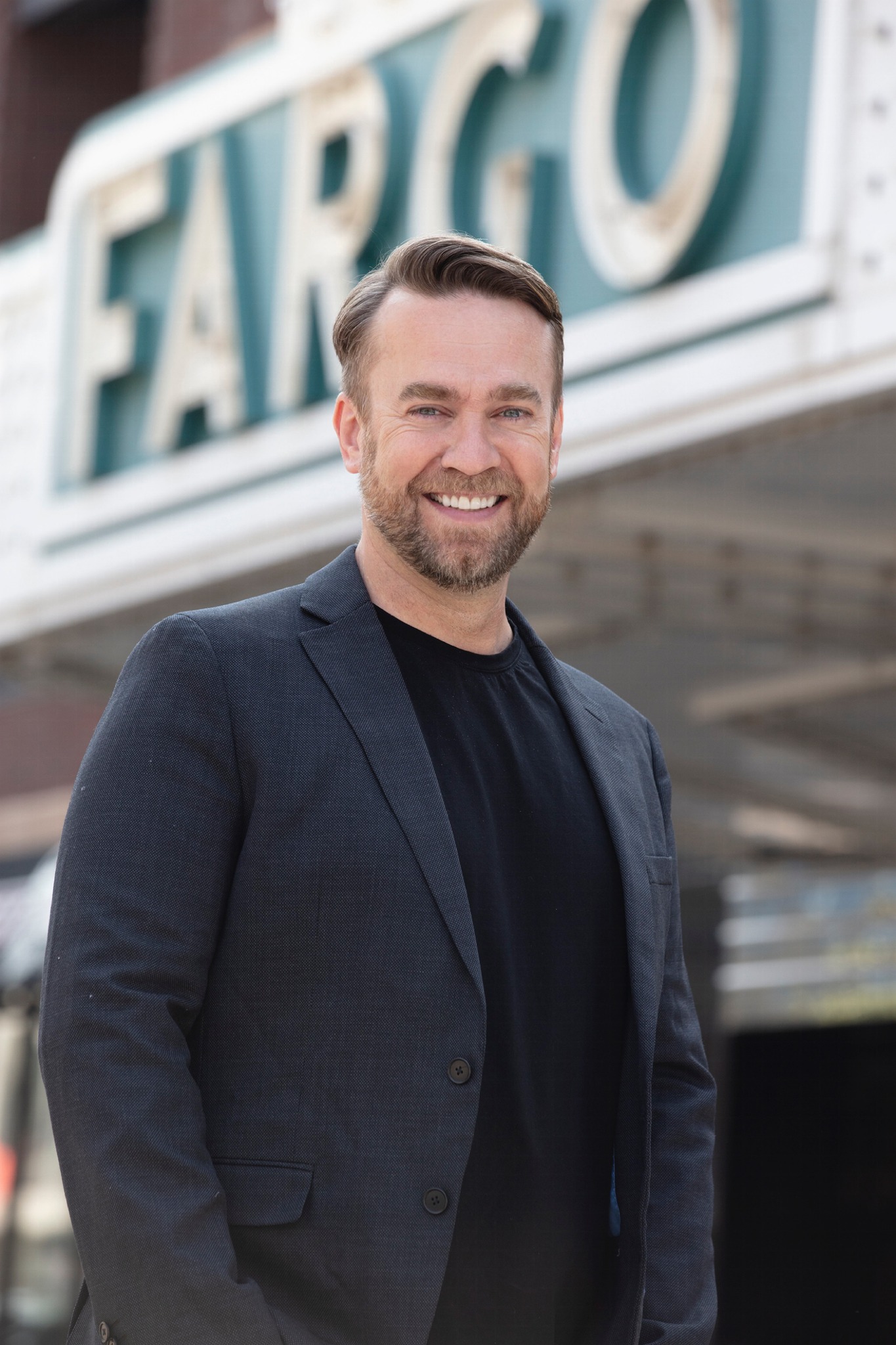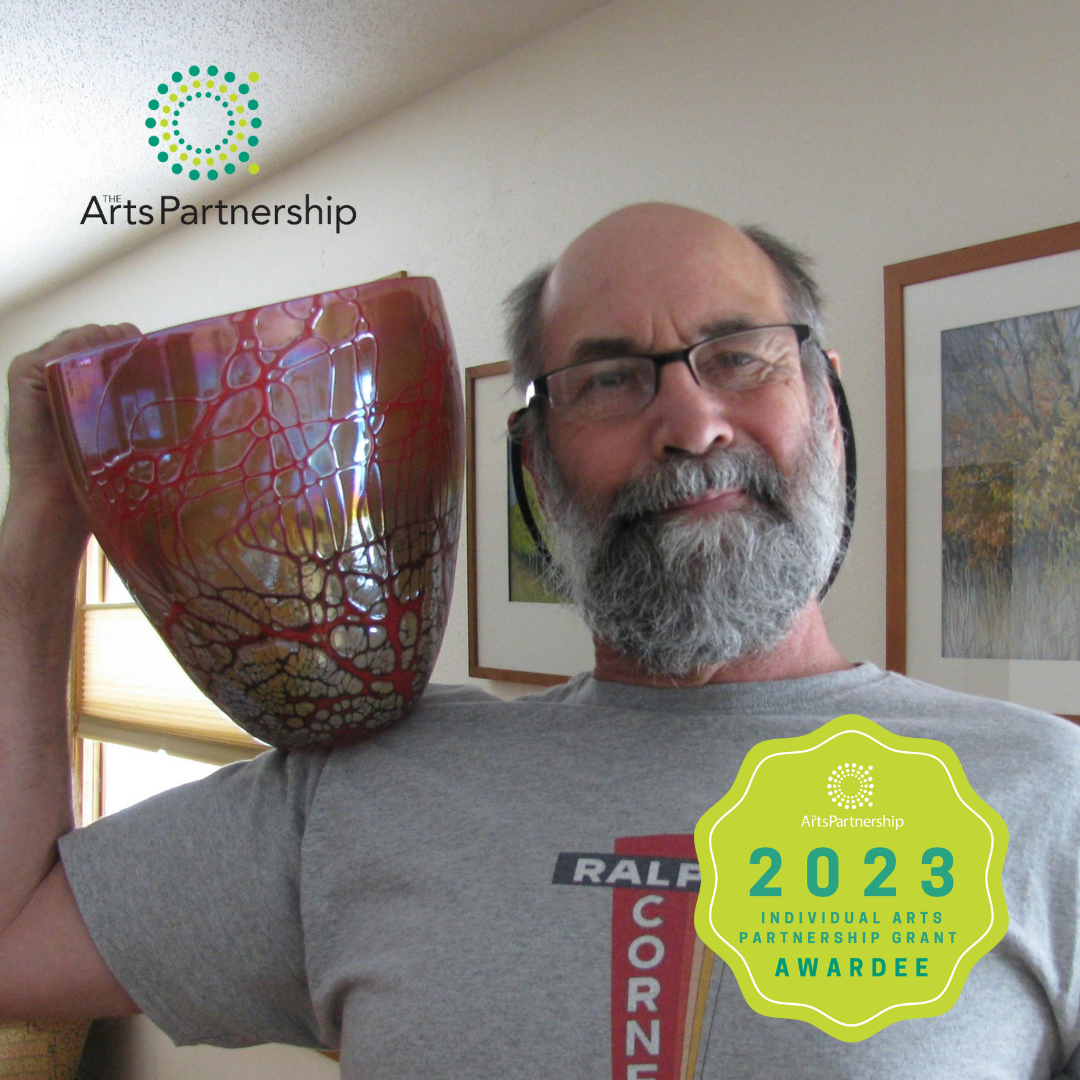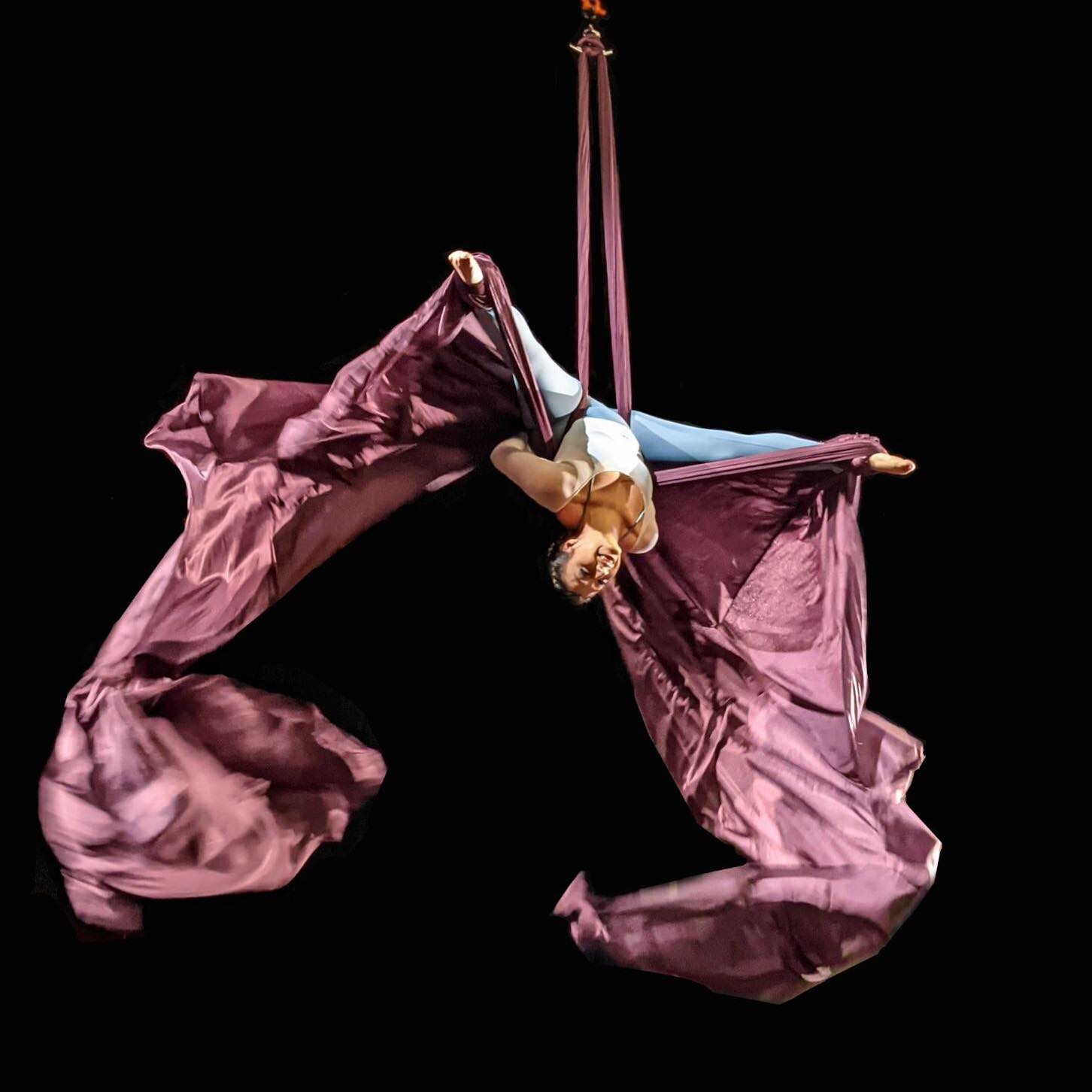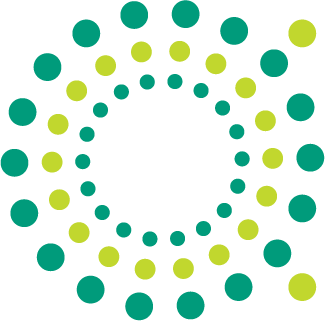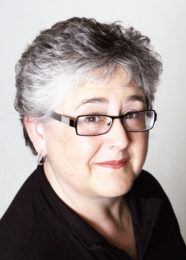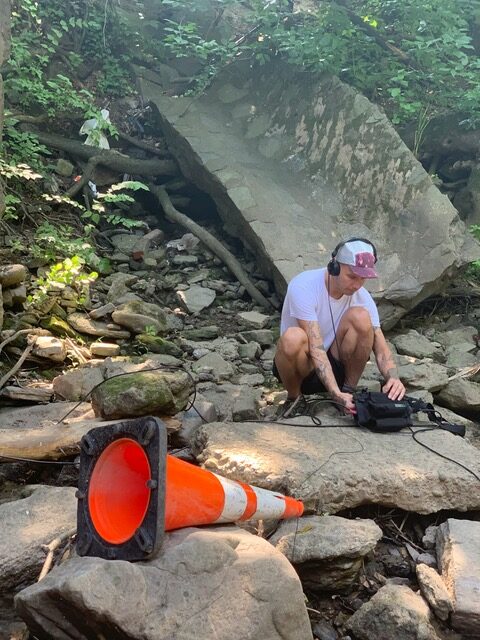
Sound artist Steven Hammer records sounds from the Schuylkill River near Philadelphia in 2022 for a project called listeningobjects.com.
Steven Hammer hears music in the most unexpected places.
The Fargo-based sound artist scavenges for sound in abandoned churches and ghost towns, riverbanks and forests, and uses what he finds to create a music experience that transcends genre.
“What I’m interested in is how sound moves through different spaces,” Hammer said. “How places shape sound.”
His latest album, “resonance,” a 3-track ep set to release Sept. 2 on Bandcamp and YouTube, incorporates his found sounds into original techno-ambient-infused songs that truly resonate with a peaceful haunting texture devised of emotion and lots of playfulness.
It’s a welcome creative addition to his life as a professor of Communication and Media Studies at Saint Joseph’s University in Philadelphia, a position that has him commuting between Fargo and Philadelphia—sometimes on a weekly basis.
Hammer is a 2022 TAP Individual Artist Partner grant recipient and 2022 Community Supported Art performing artist. Here’s more in the artist’s own words.
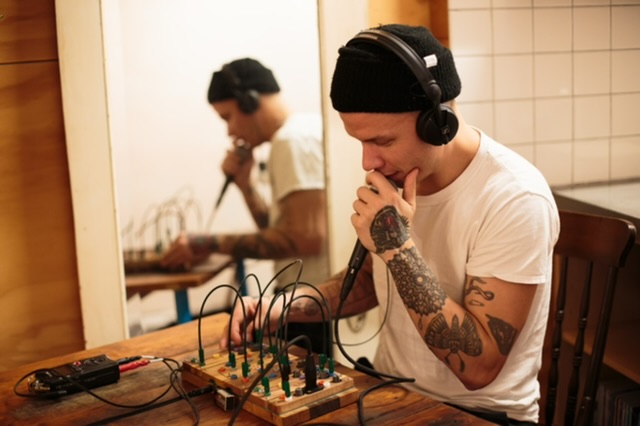
Connect with Steven Hammer
Instagram: https://www.instagram.com/patchbaydoor/
YouTube: https://www.youtube.com/user/stevenrhammer
Website: stevenrhammer.com
How would you describe your artistic style?
While not always an appropriate fit, my work is often characterized as ambient music. My work does draw a lot from this genre and I have released work with record labels that release primarily ambient electronic music. I also, though, work a lot with vocals and field recordings, and so I generally describe my work as combining elements of natural field recordings, ambient music, and synth pop.
Tell us about your latest project, “resonance.”
I recorded “resonance” in a ghost town, Deisem, ND, which is about 40 minutes south of Jamestown. All that’s left of it is an abandoned church that’s really barely standing and a little unsafe, but you can go in.
What I got really interested in is how sound moves in different spaces. Like, churches are great examples because churches are built to transmit sound using architecture. But I’m also really interested in how places shape sound in at least two ways. So part of it is about places and then part of it is taking this music and playing it through the place. In the mix you’re going to get weird experiences.
So I went into the church in Deisem, put mics on the floorboards and the walls in order to hear the bones of the building.
Walk us through your artistic practice. What does that look like?
In terms of my artistic practice—music, field recording, and producing—I am not formally trained, though I’ve learned so much from so many over the years. I am trained in communication and media studies, though, and so I have spent a lot of time thinking about and teaching multimedia communication.
I work as an Associate Professor of Communication and Media Studies at Saint Joseph’s University in Philadelphia, where I am really fortunate to have found a place to practice my work in sound and video production alongside students and other faculty—I’m always learning as much from my students as they do from me, and working in a creative discipline allows me to blur my creative and professional practices and identities.
You’re not a formally-trained musician. What piqued your interest in sound art?
When I was a teenager, I stumbled upon two things around the same time. I started teaching myself guitar and thinking about sound, affect, performance and composition. I also began tinkering with electronics and modifying electronic instruments to make them unpredictable and noisy new instruments (this is a practice known as “circuit bending”).
I think that learning how to write and play pop music and also thinking about noise and instrument design really started a pattern of thinking and making that I continue to strive for in my practice today. I want sound art—whether that is music or some other audible expression—to be simultaneously familiar and strange, comforting and uneasy, predictable and chaotic.
As someone whose work sort of transcends established genre, who do you admire or emulate in your work?
I have many influences, and I’ve never been one to try to resist influence because I don’t think creative work can happen, at least for me, in a vacuum. As a listener and recordist, I’m in awe of the work of artists like Pauline Oliveros, Toshiya Tsonuda, Chris Watson, Luc Ferrari, and Christina Kubisch. As a musician, I think that my work draws a lot from Animal Collective, Thom Yorke, and Burial.
What sorts of beliefs or social mores do you try to express through your sound art?
My favorite vocalists all have one thing in common—their articulation is so muddied that the words (and arrangements of words) are much less important and impactful than the sound of the words. This is something I learned from studying sound poets, especially in the Zaum movement.
I do often have specific things, feelings, beliefs embedded in that work, in order to make that work something I can get lost in and believe in. I don’t know how much of that translates to listeners, of course, and I tend to celebrate that ambiguity.
I can say, though, that I’m interested less in explicit ideas and more interested in creating a sense of place, space, and feeling.
Weirdest interest, passion or hobby?
I love running very long (ultramarathon) distances. It’s such an important part of balancing myself and even being my best creative self.
When you’re feeling uninspired, what lifts you up?
Yoga, running, and solo backpacking.
Favorite tool or instrument?
The one instrument I use on everything I do is the Ciat-Lonbarde Cocoquantus. It’s a stereo delay, sampler, modulator, and sound source.
What do you want people to know about being a local artist?
For so long (and if I’m honest this is still sometimes true) I’ve found art worlds/communities so baffling in terms of how to participate or get involved or become noticed. I’ve learned that making what I make, practicing my work, is really only half of the job if I want to participate in a larger community.
I also need to apply for things, go to see others’ work, and engage with others. This doesn’t come naturally for me, but I’ve learned that Fargo, for instance, really does have the kinds of resources and communities to support my work, and if I’m committed to doing my work in a legible way, I need to become an active and social participant in those communities.
What’s next for you in your arts career?
I’m very excited to release “resonance,” of course. This fall, I have some performances scheduled in Philadelphia and New York, and in spring 2023, I’m planning a residency and string of performances in Berlin.
A benefit of COVID and isolation was that I reached out much more online, and so as travel has become easier, I’m excited to pursue some new opportunities and collaborations in real-time and real-space. I’ll work on my next full-length release through the fall and winter, and hopefully have another label-released album in 2023.

About the author
Lonna Whiting is a freelance writer and owner of lonna.co, a content marketing and communications agency located in Fargo, North Dakota. She is a frequent contributor to The Arts Partnership’s content library and also provides strategic communications consultation to the organization.

